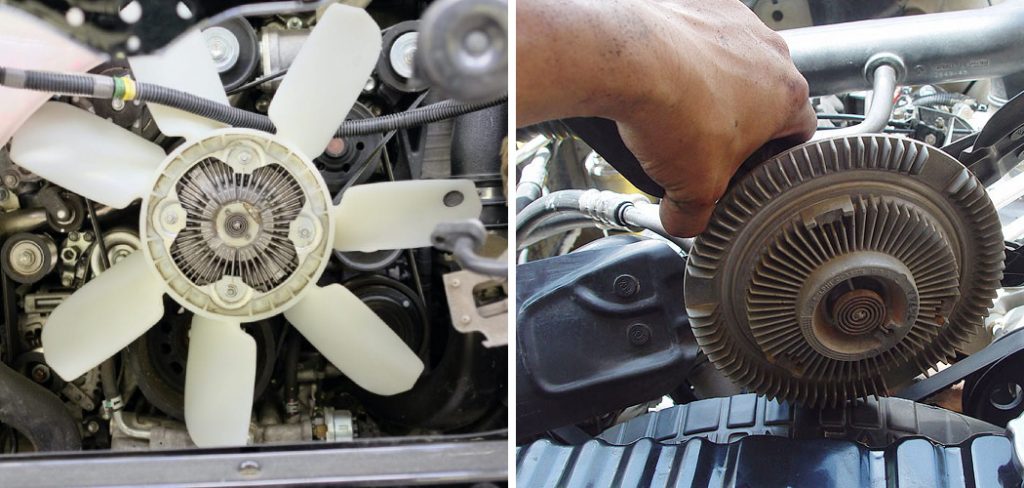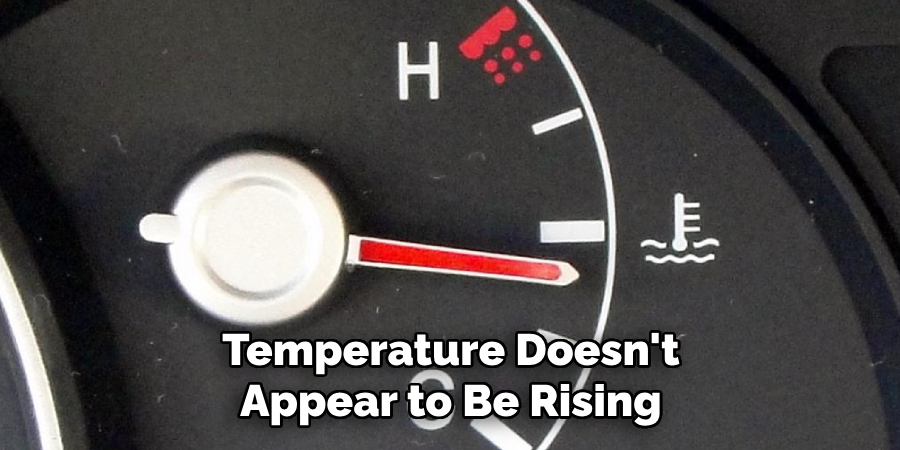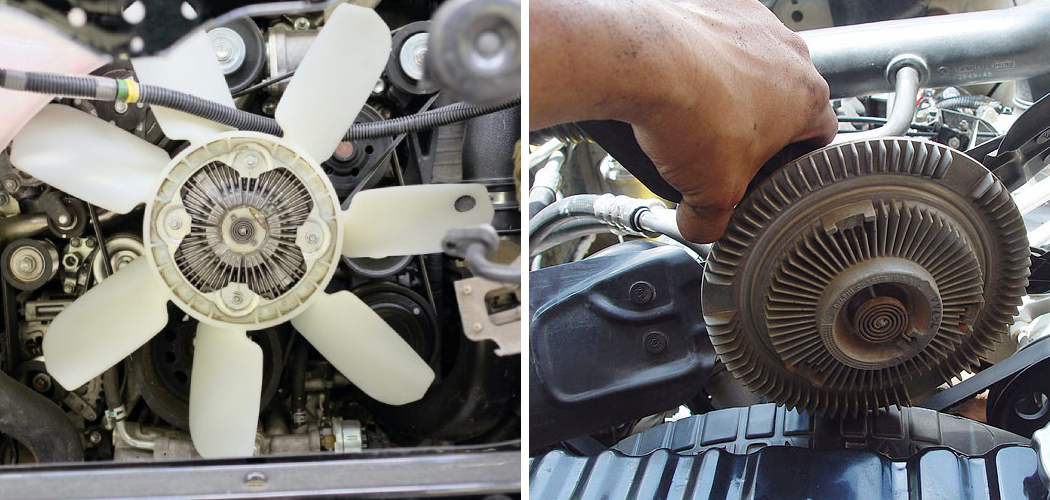As an integral component of your vehicle’s cooling system, the fan clutch plays a pivotal role in regulating the temperature of the engine by controlling the speed of the cooling fan. Recognizing the signs of a malfunctioning fan clutch is essential for preventing engine overheating and potential damage. In this article, we delve into how to tell if my fan clutch is bad.

From audible cues such as unusual fan noises to observable symptoms like temperature fluctuations and poor air conditioning performance, understanding these warning signs empowers you to diagnose and address potential issues promptly. Whether you’re a seasoned car enthusiast or a daily commuter, gaining insight into the health of your fan clutch ensures a well-maintained cooling system, promoting the longevity and efficiency of your vehicle’s engine.
Identifying Overheating Issues
A fan clutch is a device that regulates the engine’s temperature by controlling the speed of the radiator fan. It ensures efficient cooling by adjusting airflow depending on the engine’s needs. A bad fan clutch can lead to various overheating issues, resulting in damage to your vehicle’s components.
10 Methods How to Tell if My Fan Clutch Is Bad
1. Listen for A Loud Roaring Noise
One of the most common signs of a bad fan clutch is a loud roaring noise coming from the engine area. This noise can be caused by a faulty bearing or an issue with the clutch itself. If you hear this noise, it’s important to have your fan clutch checked by a mechanic. However, it’s important to note that the roaring noise can also be caused by other engine problems, so it’s best to have a professional diagnose the issue.
2. Check for Excessive Vibration
A failing fan clutch can also cause excessive vibration in the engine compartment. This can be felt through the steering wheel or floorboards and may indicate that the fan is not working properly. If you notice an unusual amount of vibration, it is important to have your fan clutch checked by a mechanic.
3. Look for Leaks

Leaks around the fan clutch can also be a sign of a problem. If you notice any fluid leaking from the clutch, it could mean that there is an issue with the seal or bearing and should be inspected by a professional. Leaks can also be a sign of over-tightening of the fan clutch, which can cause it to fail prematurely.
4. Monitor Engine Temperature
The fan clutch plays an important role in regulating the engine’s temperature. If your engine is running hotter than usual, it could be a sign that your fan clutch is not functioning properly and needs to be replaced. It is important to keep an eye on your engine temperature and make sure it stays within the normal range. If you notice any fluctuations or a consistent increase in temperature, it may be time to check your fan clutch.
5. Inspect for Rust or Corrosion
Rust or corrosion on the fan blades or other parts of the fan clutch can also indicate a problem. These issues can cause the fan to become unbalanced and lead to further damage if not addressed. You should regularly check for rust or corrosion on your fan clutch and have it replaced if necessary.
6. Check for Wobbling Blades
When inspecting your fan clutch, look for any wobbling or loose blades on the fan itself. This could be a sign that there is an issue with either the blades or the bearing within the clutch. If you notice any abnormal movement or play in the blades, it is likely that your fan clutch needs to be replaced.
7. Perform a Visual Inspection

A visual inspection of your fan clutch can reveal any obvious signs of damage such as cracks, breaks, or missing pieces. If you notice any of these issues, it’s important to have your fan clutch replaced as soon as possible. Additionally, you can check for fluid leaks which may indicate a problem with your fan clutch. If you notice any oily residue around the fan clutch area, further inspection is needed.
8. Pay Attention to Changes in Air Conditioning Performance
Since the same belt drives both the air conditioning compressor and the fan clutch, a failing fan clutch can also impact the performance of your air conditioning system. If you notice a decrease in cooling power, it could be due to a bad fan clutch.
This is because a faulty fan clutch will not be able to provide sufficient airflow to the condenser, which is responsible for cooling the refrigerant. So if you’ve noticed that your air conditioning isn’t blowing as cold as it used to, it may be time to check your fan clutch.
9. Test the Fan Blades
To determine if your fan blades are functioning properly, you can perform a simple test by trying to turn them by hand. If they do not spin freely or feel stiff, it may be time to replace the fan clutch. However, if the blades spin easily and smoothly, your fan clutch may still be in good working condition.
10. Consult with A Mechanic
If you are unsure about the condition of your fan clutch or have noticed any of the above signs, it’s best to consult with a mechanic for a professional diagnosis and repair. They will have the necessary tools and expertise to accurately determine if your fan clutch needs to be replaced. It’s important to address any potential issues with your fan clutch as soon as possible to avoid any further damage or costly repairs in the future.

Things to Consider When Determining if Your Fan Clutch Needs to be Replaced
Engine Overheating
One of the most obvious signs that your fan clutch needs to be replaced is engine overheating. If your vehicle’s temperature gauge shows the engine is running hotter than normal, it could mean that the fan clutch is not engaging properly and not providing enough airflow to cool the engine.
Loud Noise
Fan clutches are designed to operate quietly, so any loud noises could indicate a problem. If you hear a roaring or grinding sound coming from the front of your vehicle when the engine is running, it could be a sign that the fan clutch bearings are failing and need replacement.
Difficulty Starting or Accelerating
A bad fan clutch can also cause performance issues with your vehicle. If you notice that your car is struggling to start or accelerate, it could be due to a defective fan clutch not allowing enough air circulation for the engine to function properly.
Visual Inspection
Another way to tell if your fan clutch needs to be replaced is through a visual inspection. Open the hood and check for any signs of leakage, cracks, or excessive play in the fan clutch. These can all be indications of a failing fan clutch that needs to be replaced.
Common Mistakes to Avoid When Identifying a Bad Fan Clutch
When it comes to maintaining your vehicle, there are certain issues that can arise that may seem daunting and difficult to identify. One of these issues is a bad fan clutch. It’s not always easy to tell if your fan clutch is functioning properly or not, which can lead to potential problems down the road. In this guide, we will discuss some common mistakes to avoid when trying to identify a bad fan clutch.

One of the biggest mistakes people make is assuming that their fan clutch is working fine just because the engine temperature doesn’t appear to be rising. While this may seem like an obvious sign, it’s important to remember that a fan clutch can still be malfunctioning even if your engine isn’t overheating. This is because the fan clutch may still be engaged, just not as efficiently as it should be.
Another mistake to avoid is relying solely on your vehicle’s temperature gauge for clues. While this gauge can provide some insight into potential issues, it’s not always an accurate indicator of a bad fan clutch. This is because the gauge measures the temperature of the coolant, which can still be within a safe range even if the fan clutch is malfunctioning.
Conclusion
In conclusion, keeping an eye on your fan clutch is crucial to maintaining a healthy and efficient engine. By regularly checking for symptoms such as overheating, unusual noises, and poor air conditioning performance, you can catch a bad fan clutch early on and prevent bigger problems down the road. And if you do determine that your fan clutch is indeed faulty, don’t panic! Replacing it is a fairly straightforward process that can be done at home with some basic tools.
Just remember to choose a high-quality replacement and follow the proper installation steps. Your car will thank you for it. So don’t wait until it’s too late – take the time to check your fan clutch today and keep your vehicle running smoothly for years to come. Be sure to follow all instructions on how to tell if my fan clutch is bad carefully, and always consult an expert when in doubt. Happy repairing!

